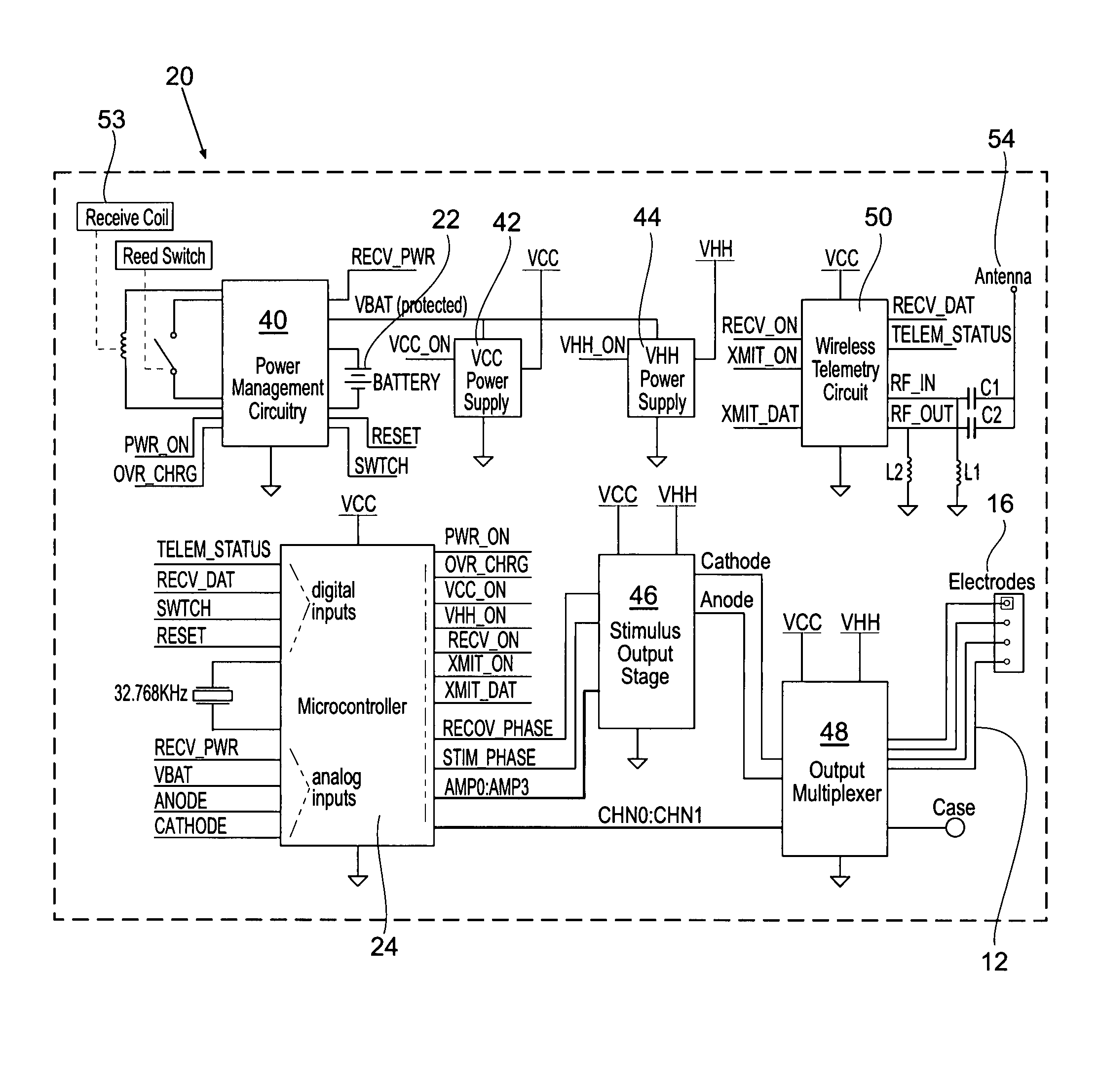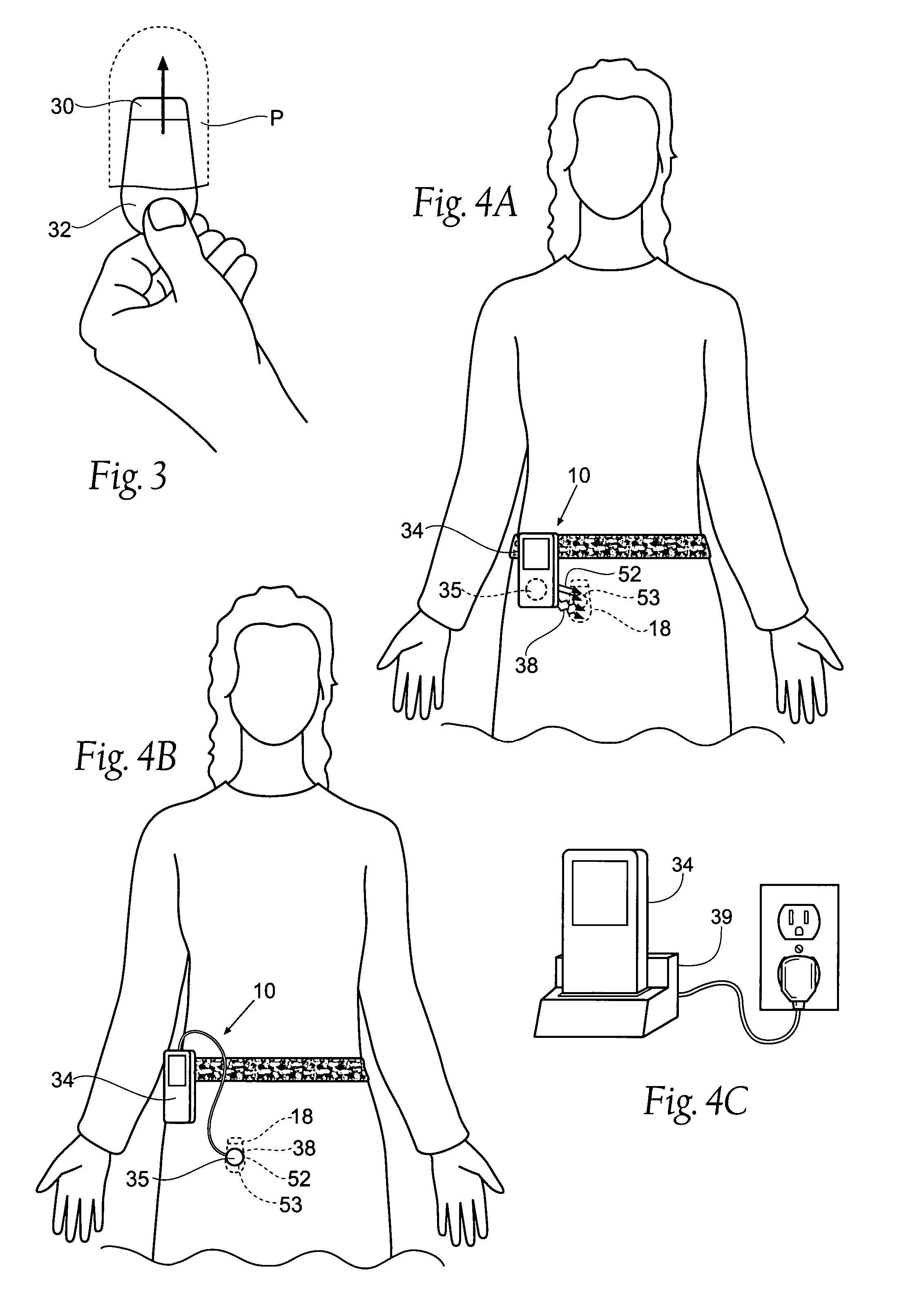Implantable pulse generator power management
a technology of power management and pulse generator, applied in the field of implantable pulse generator power management, can solve the problems of limited acceptance by patients, limited user control, and many limitations and issues, and achieve the effects of reducing office visits, efficient and effective recharge, and improving the quality of life of patients
- Summary
- Abstract
- Description
- Claims
- Application Information
AI Technical Summary
Benefits of technology
Problems solved by technology
Method used
Image
Examples
Embodiment Construction
[0039]The various aspects of the invention will be described in connection with providing stimulation of central nervous system tissue, muscles, or nerves, or muscles and nerves for prosthetic or therapeutic purposes. That is because the features and advantages that arise due to the invention are well suited to this purpose. Still, it should be appreciated that the various aspects of the invention can be applied to achieve other objectives as well.
I. Stimulation Assembly
[0040]A. System Overview
[0041]FIG. 1 shows an assembly 10 for stimulating a central nervous system tissue, nerve, or a muscle, or a nerve and a muscle for therapeutic (treatment) or functional restoration purposes. The assembly includes an implantable lead 12 coupled to an implantable pulse generator or IPG 18. The lead 12 and the implantable pulse generator 18 are shown implanted within a tissue region T of a human or animal body.
[0042]The distal end of the lead 12 includes at least one electrically conductive surfa...
PUM
 Login to View More
Login to View More Abstract
Description
Claims
Application Information
 Login to View More
Login to View More - R&D
- Intellectual Property
- Life Sciences
- Materials
- Tech Scout
- Unparalleled Data Quality
- Higher Quality Content
- 60% Fewer Hallucinations
Browse by: Latest US Patents, China's latest patents, Technical Efficacy Thesaurus, Application Domain, Technology Topic, Popular Technical Reports.
© 2025 PatSnap. All rights reserved.Legal|Privacy policy|Modern Slavery Act Transparency Statement|Sitemap|About US| Contact US: help@patsnap.com



